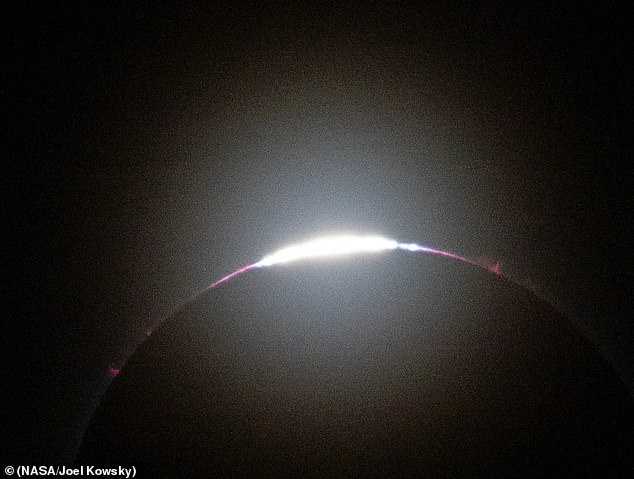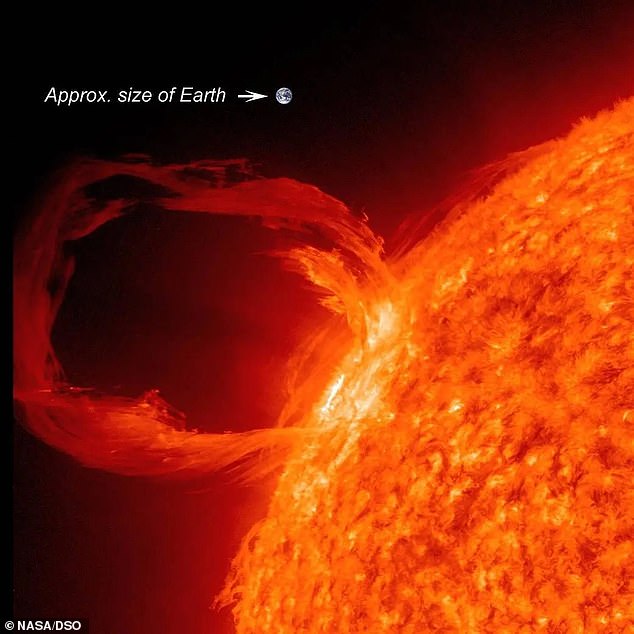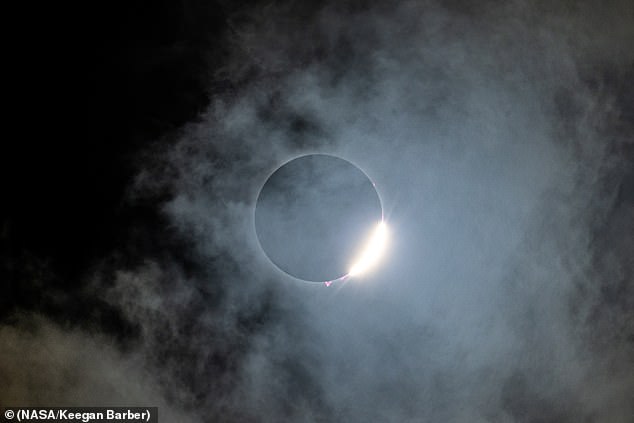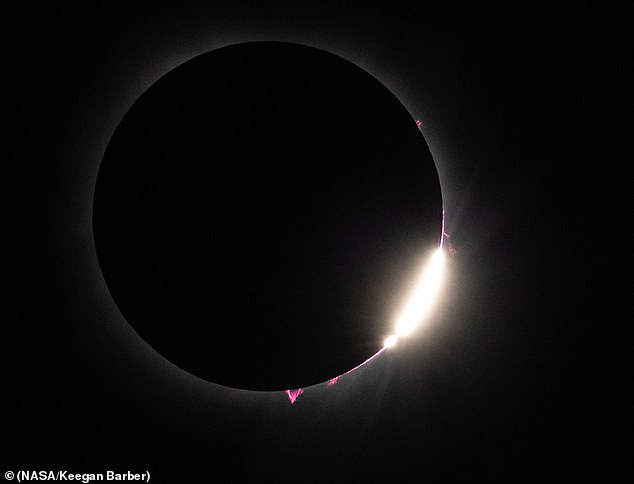NASA sees incredible pink ‘flames’ pulsing from behind the total solar eclipse – what are they?
A NASA photographer has captured mesmerizing images that appear to show majestic fuchsia-pink flames emerging from behind the solar eclipse.
Snapper Keegan Barber captured the total solar eclipse when the moon blocked the sun and plunged Dallas, Texas into darkness on April 8, 2024.
The images show massive pink plasma spikes pulsing from the Sun’s surface into the second atmosphere, the chromosphere, and the solar outer corona.
These planet-sized pink flames are called “solar prominences” — loops of anchored plasma, or superheated, electrically charged gas — that can last for months at a time on the sun’s surface.
Both the Sun’s outer dimmer layers, the chromosphere and the corona, where these solar prominences flow, are normally drowned out by the full force of the Sun’s brightness, but were visible to both professional and amateur astronomers during last week’s eclipse.
NASA photographer Keegan Barber captured several bright pink “solar prominences” during the solar eclipse as the sun hovered nearly 90 million miles above Dallas, Texas, on April 8, 2024 (above)

A solar prominence differs from a solar flare in that these loops of anchored plasma, or superheated, electrically charged gas, can persist on the sun’s surface for months at a time.

Solar prominences are also gigantic and can be ten times the diameter of planet Earth or more
Barber, who also works as a NASA photo researcher, was able to take several high-resolution images of the Sun’s prominences, which were unusually visible thanks to the Moon, which had eclipsed all but the Sun’s white corona and pink chromosphere.
But even casual observers who watch the eclipse safely from behind their eclipse glasses and photograph the event with nothing fancy but a phone camera can catch a glimpse of the rose-red spires.
“I don’t know what these red things actually are, but they were visible to the naked eye,” one Reddit user wrote on the website. r/space subreddit, “and they appear very clearly on camera.”
The Sun’s prominence derives its pinkish-reddish hue from the transformation of the Sun’s hydrogen gas into a plasma, because elemental hydrogen emits reddish light when heated to high temperatures.
It has long been known that heating different chemical elements produces specific colors, a scientific fact applied in the fireworks industry:
For example, copper metal in fireworks leads to bursts of blue light, while barium is known to produce bright green hues and sodium bursts into vibrant yellow hues.

The NASA photo explorer took several high-resolution images of these solar prominences, which were unusually visible thanks to the moon, which had eclipsed all but the sun’s white corona and reddish-pink chromosphere.

One Reddit poster did some “back of the envelope” calculations, based on the Sun’s diameter, to discover that this solar prominence was about five times the length of Earth. “That prominence at the bottom is about 17.5 pixels high,” they said, or “a height of 45,000 miles.”
The arcuate and pointed shapes of each prominence are derived from the magnetic fields surrounding it that trap the flow of electrically charged hydrogen plasma within it, like a stream of metal balls in a magnetic tube.
Over the course of their first day of existence, a solar prominence begins as a smaller loop closer to the Sun’s surface, expanding or unfolding like a loose thread on a sweater, and extending further into the upper atmosphere of the Sun. Sun.
A gigantic nuclear fusion reaction bound in space by its own gravity. The sun is composed mainly of plasma, an electrified gas of electrons and ions.
The electrified current of that plasma is what astronomers believe is the cause of the powerful, magnified pulses that occasionally come from the sun.
When the magnetic loops are released into space, enormous currents of plasma are drawn to fill them, resulting in prominences that can last for weeks or months.
Although the brilliant arcs of these solar prominences will often collapse, or ‘drain’ gas towards the Sun along their magnetic field lines, there are occasions when they become unstable and their energy is released into space.
“At the time of the eclipse, the Sun was near a solar maximum, a period of increased activity that occurs about every eleven years when the Sun’s magnetic field shifts,” says NASA’s geophysics writer. Lindsey Doermann said.
“The sun’s activity was very different during the 2017 total solar eclipse,” she noted. ‘At that time, solar minimum was approaching.’
Images taken during the 2017 solar eclipse, during a period of less intense solar energy and solar activity during that low cyclical ebb, showed fewer tangles and fewer streams of magnetic plasma eruptions from the Sun.
“Streamers,” like these prominences on the Sun, Doermann said, “were confined to the Sun’s equatorial region in 2017.
